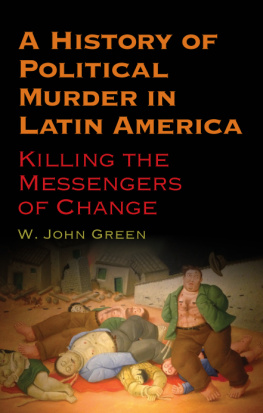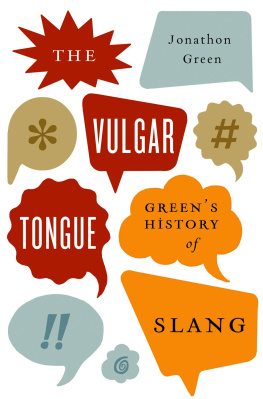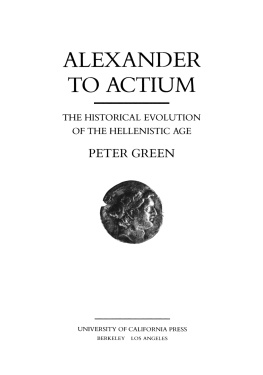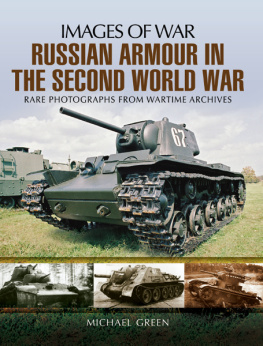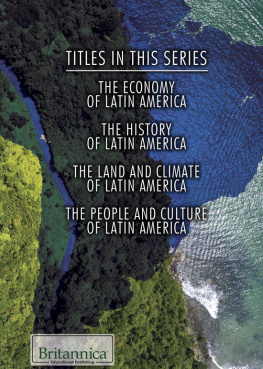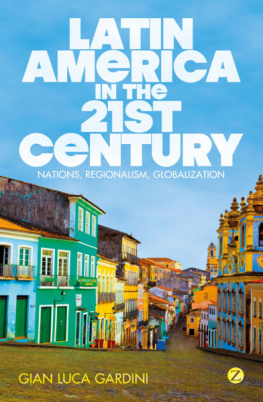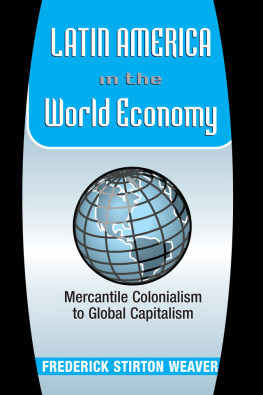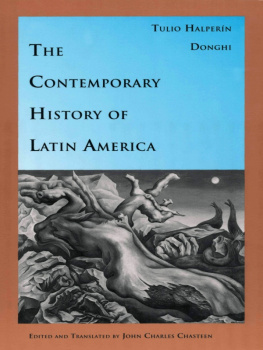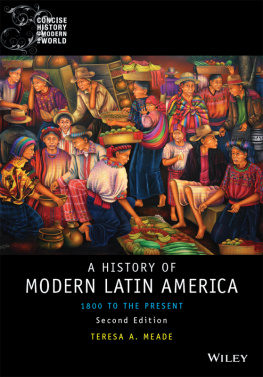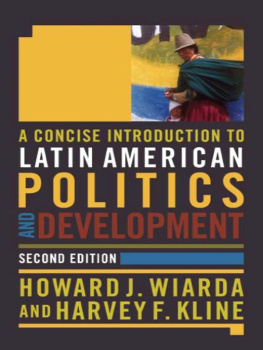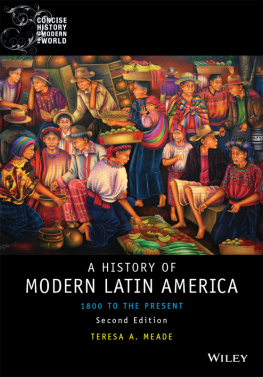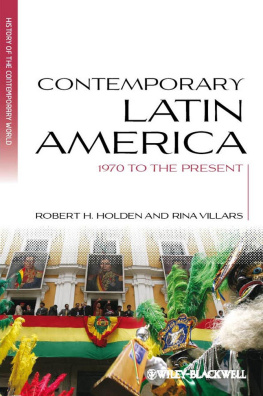Green - A History of Political Murder in Latin America: Killing the Messengers of Change
Here you can read online Green - A History of Political Murder in Latin America: Killing the Messengers of Change full text of the book (entire story) in english for free. Download pdf and epub, get meaning, cover and reviews about this ebook. City: Array, year: 2015, publisher: State University of New York Press, genre: Politics. Description of the work, (preface) as well as reviews are available. Best literature library LitArk.com created for fans of good reading and offers a wide selection of genres:
Romance novel
Science fiction
Adventure
Detective
Science
History
Home and family
Prose
Art
Politics
Computer
Non-fiction
Religion
Business
Children
Humor
Choose a favorite category and find really read worthwhile books. Enjoy immersion in the world of imagination, feel the emotions of the characters or learn something new for yourself, make an fascinating discovery.
A History of Political Murder in Latin America: Killing the Messengers of Change: summary, description and annotation
We offer to read an annotation, description, summary or preface (depends on what the author of the book "A History of Political Murder in Latin America: Killing the Messengers of Change" wrote himself). If you haven't found the necessary information about the book — write in the comments, we will try to find it.
Green: author's other books
Who wrote A History of Political Murder in Latin America: Killing the Messengers of Change? Find out the surname, the name of the author of the book and a list of all author's works by series.
A History of Political Murder in Latin America: Killing the Messengers of Change — read online for free the complete book (whole text) full work
Below is the text of the book, divided by pages. System saving the place of the last page read, allows you to conveniently read the book "A History of Political Murder in Latin America: Killing the Messengers of Change" online for free, without having to search again every time where you left off. Put a bookmark, and you can go to the page where you finished reading at any time.
Font size:
Interval:
Bookmark:

A HISTORY OF POLITICAL MURDER IN LATIN AMERICA
SUNY series in Global Modernity

Arif Dirlik, editor
A HISTORY OF POLITICAL MURDER IN LATIN AMERICA
KILLING THE MESSENGERS OF CHANGE
W. JOHN GREEN

Cover art: Masacre en Colombia by Fernando Botero, courtesy of the Museo Nacional de Colombia.
Map images Brian Wrigley
Published by State University of New York Press, Albany
2015 State University of New York
All rights reserved
Printed in the United States of America
No part of this book may be used or reproduced in any manner whatsoever without written permission. No part of this book may be stored in a retrieval system or transmitted in any form or by any means including electronic, electrostatic, magnetic tape, mechanical, photocopying, recording, or otherwise without the prior permission in writing of the publisher.
For information, contact State University of New York Press, Albany, NY
www.sunypress.edu
Production, Jenn Bennett
Marketing, Kate R. Seburyamo
Library of Congress Cataloging-in-Publication Data
Green, W. John, 1963
A history of political murder in Latin America : killing the messengers of change / W. John Green.
pages cm. (SUNY series in global modernity)
Includes bibliographical references and index.
ISBN 978-1-4384-5663-8 (hardcover : alkaline paper)
ISBN 978-1-4384-5665-2 (e-book)
1. Political violenceLatin AmericaHistory20th century. 2. MurderLatin AmericaHistory20th century. 3. AssassinationLatin AmericaHistory20th century. 4. Disappeared personsLatin AmericaHistory20th century. 5. MassacresLatin AmericaHistory20th century. 6. Political persecutionLatin AmericaHistory20th century. 7. State-sponsored terrorismLatin AmericaHistory20th century. 8. Political cultureLatin AmericaHistory20th century. 9. Latin AmericaPolitics and government20th century. 10. Latin AmericaSocial conditions20th century. I. Title.
| F1414.G75 2015 306.2098dc23 | 2014027596 |
10 9 8 7 6 5 4 3 2 1
CONTENTS
PART I
THE PRACTICE OF POLITICAL MURDER IN LATIN AMERICA
PART II
JUSTIFICATIONS, ASSOCIATIONS, AND CONSEQUENCES
PREFACE AND ACKNOWLEDGMENTS
On the morning of November 17, 1991, I went for a hike that began along the Circunvalar, a winding road that threads its way through the Parque Nacional on the eastern edge of Bogot, where the city crowds against Mount Monserrate. After rounding a secluded bend, my companions and I saw a group of military police milling about a grassy bank. Spread upon it lay the bodies of two young men, neatly arranged side by side. Each had been shot in the chest several times and obviously moved there later. As we passed, one of the soldiers joked, No estn durmiendo. (Theyre not sleeping.) Before I left Colombia in late July 1992, I ran across the publically displayed bodies of people violently killed on two other occasions.
The early to mid-1990s were the final years of the bloody and highly successful offensive by paramilitary groups against the leftist Unin Patritica party, a political organization with ties to the Revolutionary Armed Forces of Colombia, the FARC, Colombias largest guerrilla army. One might say that this project began with those sightings, but it also grows out of my long-term research interest in popular political mobilizations and the repression they often face. My first book explored Colombian Gaitanismo in the 1920s, 30s, and 40s, a populist movement that ended with its leaders assassination in 1948 and the violent suppression of its adherents in the years that followed.
This venture is, admittedly, ambitious in its scope. I examine the phenomenon of political murder throughout modern Latin America, focusing on many different countries in some depth, with quicker but significant glances at most of the rest. Given the number of such killings in Latin America, the aim is necessarily more thematic and comparative than encyclopedic. I build on an expansive literature composed of monographs on individual countries and their regions. And though a growing number of excellent collections now compare and contrast the various dirty wars since the late 1960s, they are multiauthored and invariably structured as a series of separate country studies that sometimes seem like an exercise in parallel play. In contrast, this book flips the focus from country histories to political murder itself, pulling the broader literature together to let the various cases illuminate the phenomenon in concert and thematically. Obvious disparities exist among the different countries experiences, but what really jump out are the similarities. This is important to recognize because many specialists tend to see their country or subregion (Mexico, Central America, the Caribbean, the Andes, the Southern Cone, Brazil) as unique or the worst case, while others might insist that their countries are not as bad. This project is, therefore, a regional history that should be of use to the wider scholarly community, yet it is also aimed at a general audience. I present a broad portrait of political murder in Latin America and offer a unified thesis about its causes and practices. My goal is comparative synthesis.
Many Latin Americanist scholars attest to the value of comparative history, but few actually attempt it. One explanation for this situation, as Charles Bergquist noted in his own ambitiously comparative Labor in Latin America, is that historians revere studies rooted deeply in primary sources, and rightly so. But this laudable preference can unfortunately reinforce a tendency toward excessively focused specialization, with contentious territorial undertones, even in an interconnected field like Latin American studies. The result is a palpable timidity regarding forays onto other peoples turf. Not surprisingly, most works of history dealing with the postindependence period still revolve around the nation-state. It is also true that many big comparative books can have problems. Some are better at presenting lots of details and entertaining vignettes than at outlining a coherent interpretation, while others are long on interpretation but short on evidence. Both of these undesirable outcomes dissuade authors.
Finally, historians can be divided broadly by disposition into splitters and lumpers. The more extreme splitters object to overarching comparisons. They want to focus on the individual cases, separate regions, and very different countries during neatly defined periods. As with the insistence on primary documents, this healthy impulse can also be taken to absurd levels. Regional history is more unwieldy, to be sure, but Mexico, Colombia, Peru, Argentina, Brazil, etc., are themselves large, complex, culturally and regionally diverse nations. Given that all political boundaries are to some degree artificial constructs, should we also avoid talking about them as wholes? Another extreme that would be absurd in the present circumstance is seeing every murder and massacre as a separate, unique, atomized occurrence, unrelated and uncomparable. Certainly the timing, scale, or intensity of political murder is tied to the individual political story of a country or one of its regions. The details and context matter. But even giving the splitters their due, we can recognize parallels and similarities. Whether consistent or sporadic, recourse to political murder across the region reveals a broader phenomenon. Countries with intense histories of political murder turn out to be examples of a larger experience rather than exceptional cases. The splitters love monographs on narrow topics. So, in fact, do lumpers, but they see them as building blocks, and believe that we should use them to construct larger interpretive structures (ones that can stand straight and true, of course).
Font size:
Interval:
Bookmark:
Similar books «A History of Political Murder in Latin America: Killing the Messengers of Change»
Look at similar books to A History of Political Murder in Latin America: Killing the Messengers of Change. We have selected literature similar in name and meaning in the hope of providing readers with more options to find new, interesting, not yet read works.
Discussion, reviews of the book A History of Political Murder in Latin America: Killing the Messengers of Change and just readers' own opinions. Leave your comments, write what you think about the work, its meaning or the main characters. Specify what exactly you liked and what you didn't like, and why you think so.

